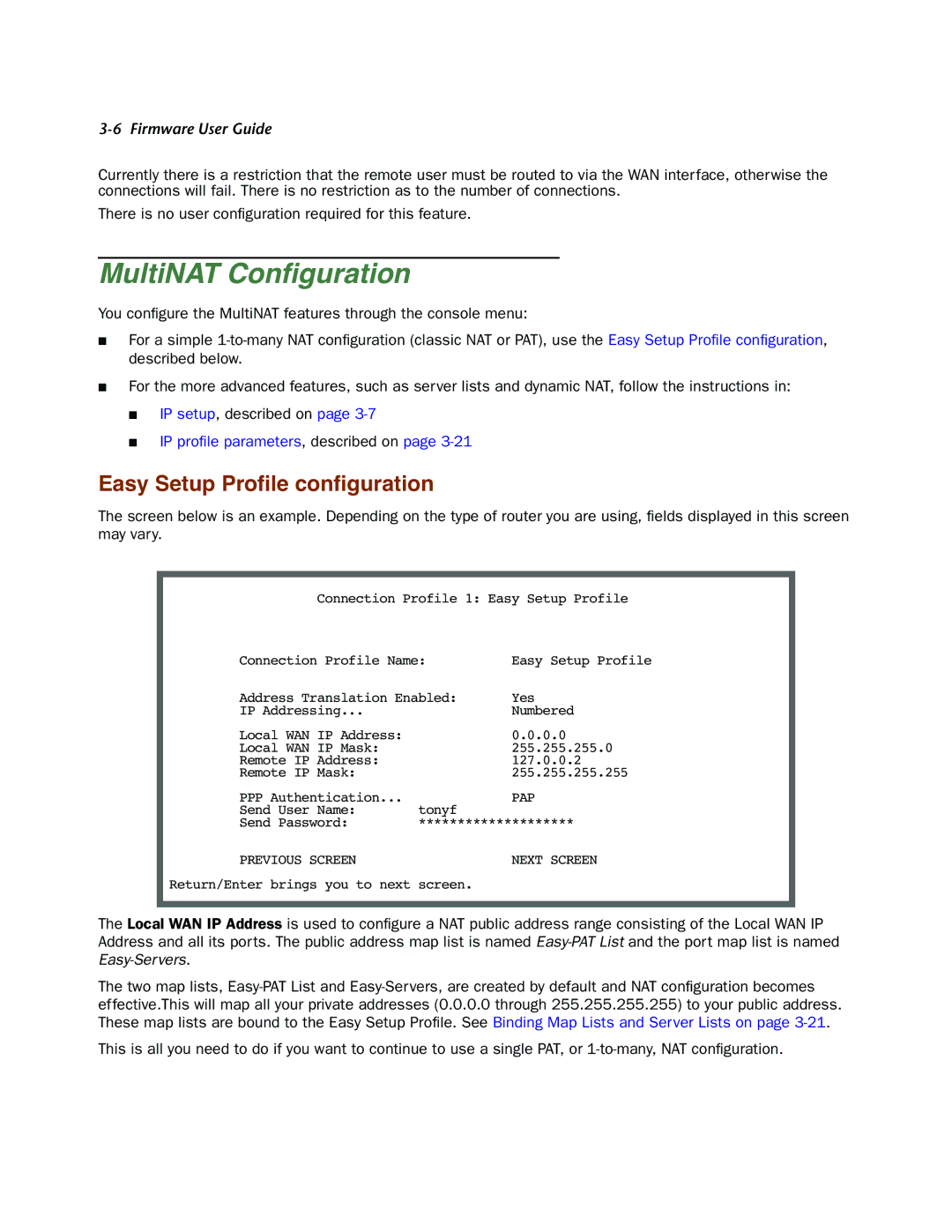
3-6 Firmware User Guide
Currently there is a restriction that the remote user must be routed to via the WAN interface, otherwise the connections will fail. There is no restriction as to the number of connections.
There is no user configuration required for this feature.
MultiNAT Configuration
You configure the MultiNAT features through the console menu:
■For a simple
■For the more advanced features, such as server lists and dynamic NAT, follow the instructions in:
■IP setup, described on page
■IP profile parameters, described on page
Easy Setup Profile configuration
The screen below is an example. Depending on the type of router you are using, fields displayed in this screen may vary.
Connection Profile 1: Easy Setup Profile
Connection Profile Name: | Easy Setup Profile | |
Address Translation Enabled: | Yes | |
IP Addressing... |
| Numbered |
Local WAN IP Address: |
| 0.0.0.0 |
Local WAN IP Mask: |
| 255.255.255.0 |
Remote IP Address: |
| 127.0.0.2 |
Remote IP Mask: |
| 255.255.255.255 |
PPP Authentication... |
| PAP |
Send User Name: | tonyf |
|
Send Password: | ******************** | |
PREVIOUS SCREEN |
| NEXT SCREEN |
Return/Enter brings you to next screen.
The Local WAN IP Address is used to configure a NAT public address range consisting of the Local WAN IP Address and all its ports. The public address map list is named
The two map lists,
This is all you need to do if you want to continue to use a single PAT, or
